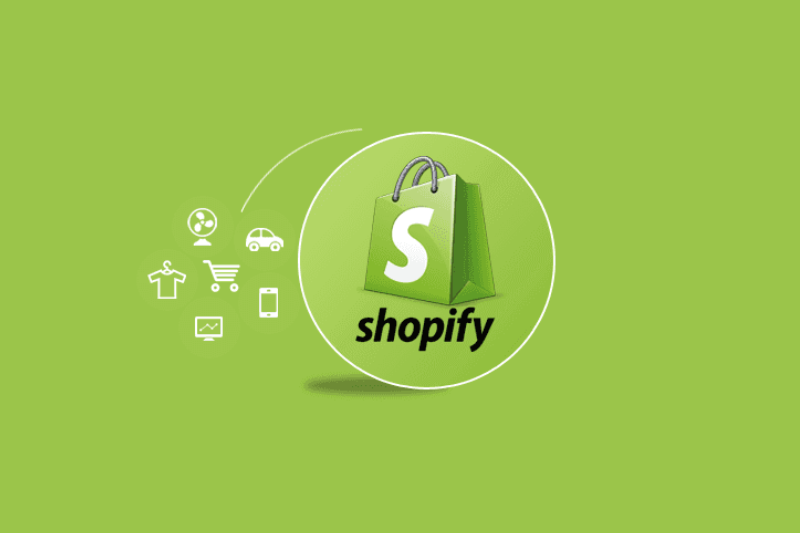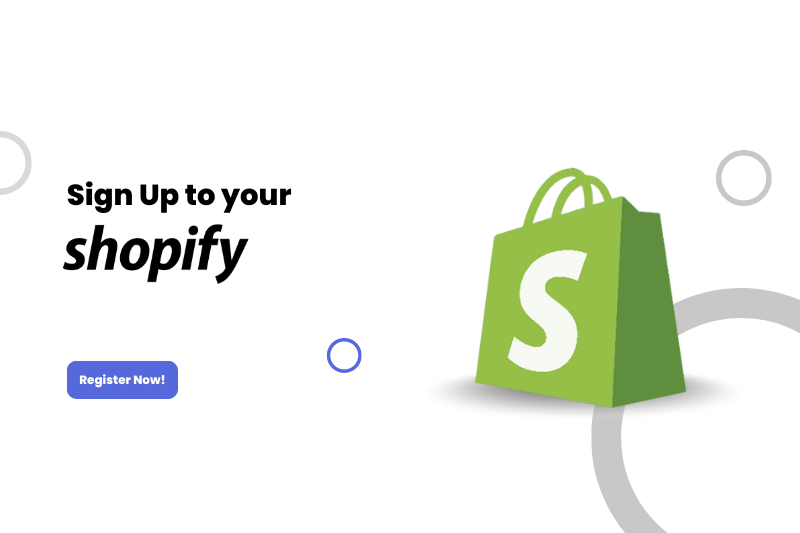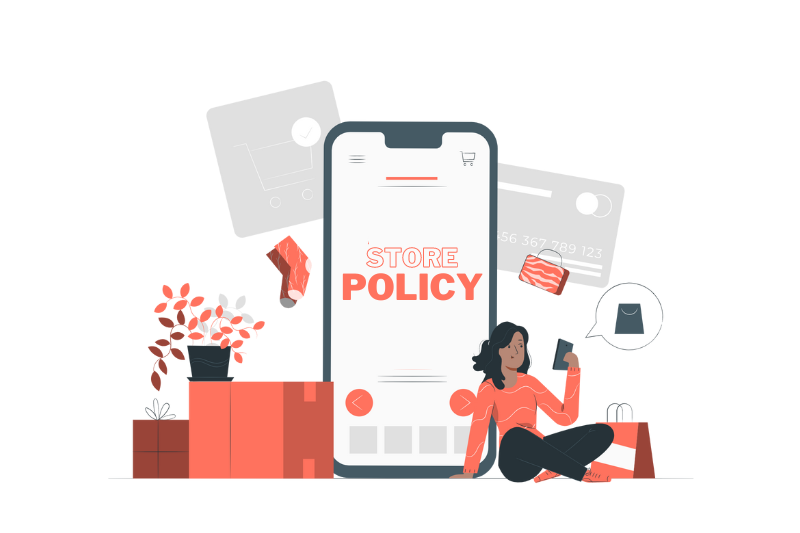- Python
- Java
- Javascript / Jquery
- C, C# & C++
- SQL
- PHP
- Go
- Ajax
- Visual Basic (ms office)
- Angular
- Laravel
- .net & asp.net
- Flex, Flash
- Linux
- Swift
- Rust
- Matlab
- Django
- Ruby On Rails
- MEAN Stack
- MERN Stack
- MEVN Stack
- LAMP Stack
- LEMP Stack
- LAPP Stack
- LEAP Stack
- LLMP Stack
- XAMPP Stack
- WAMP Stack
- WIMP Stack
- MAMP Stack
- Flutter Stack
- Serverless Stack
- Misc & Others
- Browse All Categories
Unlocking Success: Exploring the Power of Shopify Ecommerce Platform
Shopify is a popular e-commerce platform which lets you manage and grow your online store whether you are an individual or a business enterprise. It provides a user-friendly interface and powerful features, which creates a smooth and intuitive experience for both entrepreneurs and companies looking to establish a strong online presence. Whether you're a small or a big enterprise, Shopify provides a wide range of tools and services in order to help you build and customize your store, sell products, process payments, and optimize your business in the digital marketplace. Shopify enables you to reach customers globally and makes your entrepreneurial dreams come true.

Features of Shopify Platform
- Offers a user-friendly interface that facilitates customizing your online stores
- Looks great and functions well on mobile devices.
- Easy to add, edit, and organize products and manage inventory
- Supports various payment options.
- Efficient order management, tracking shipments, and return handling
- Built-in SEO features help improve your store's visibility in SERPs
- Marketing tools: Utilize discount codes, gift cards, abandoned cart recovery, and integrations with email and social media marketing.
- Provides detailed insights into your store's performance, sales, and visitor behavior.
How to Get Started with Shopify
To get started with Shopife, follow these steps:

Sign up for Shopify:
In order to sign up for Shopify, visit the official website and click on the "Start free trial" button. Fill in your email address, password, and store name, then create your store. Fill in additional business details and proceed to the Shopify admin dashboard. Enter information about your industry and revenue goals. Next, indicate the products you intend to sell and choose to add them later or explore the process immediately. This way you can easily sign up for Shopify! Finally, you can start customizing your Shopify store and getting it ready for business.

Choose a theme:
To add a theme log in to your admin dashboard and navigate to the Themes section. Browse through the available themes in the Shopify Theme Store and preview them to see how they look on desktop and mobile devices. After selecting a theme you like, add it to your library and customize it using the theme editor. Make necessary adjustments to colors, fonts, layouts, and other elements to match your brand. Review your changes when you are satisfied and publish the theme to make it live on your store. Shopify provides a user-friendly interface for selecting and customizing themes and ensures that your online store matches your brand style and identity.

Customize your store:
In order to customize your Shopify store, select a theme that suits your brand and goals. You can use the theme editor to customize colors, fonts, and layouts. You can optimize product presentation and navigation menus and try adding extra pages and crafting engaging content. Explore the app store in order to add additional functionality. Customize the checkout process and make sure that it is mobile-responsive. Test your customization from time to time for a cohesive and user-friendly store. Shopify offers you intuitive tools for easy customization and an appealing shopping experience.

Set up your products:
In order to set up your products, log in to your admin dashboard and navigate to the "Products" section. Click on the "Add product" button to create a new product listing. After filling in the necessary details, including the product title, description, and images, set the pricing, inventory information, and any variants if applicable. Configure options like weight, dimensions, and shipping details. For digital products, utilize the "Digital Downloads" section. Optimize your product's Search Engine Optimization (SEO) with keywords and a meta description. Review the details for accuracy and save the product. Repeat these steps to add more products. Regularly update your listings as needed. With Shopify's intuitive interface, managing and showcasing your products becomes a seamless process, helping you attract customers to your online store

Configure your payment gateway:
To configure your payment gateway in Shopify, go to "Settings" and select "Payment providers." if you have an existing account, choose your preferred gateway and activate it, or you can create a new account. Customize settings such as currency, payment methods, and transaction preferences. Test the payment process and review and adjust additional settings if required. Save your changes and your payment gateway is ready to securely process payments on your Shopify store. Monitor and manage your settings from time to time for a smooth payment experience. You can integrate Shopify with several payment gateways which offers flexibility for your business requirements.

Set up shipping methods:
To set up shipping methods in Shopify, go to "Settings" and select "Shipping and Delivery." Select the preferred shipping zone and click "Manage rates." Add or edit a shipping method by specifying its name, rate type, and conditions. You can customize settings like delivery speed and package dimensions and set up international shipping rates and restrictions if applicable. Save your changes and repeat for other shipping methods. Test the settings for the accuracy and functionality of your shipping method. Update your shipping settings as required. Shopify's platform allows for easy configuration of accurate shipping methods to improve the shopping experience.

Add relevant store policies:
To add relevant store policies in Shopify, go to "Settings" and select "Legal." Choose the policy to update, like "Privacy policy" or "Refund policy." Customize the text in such a way that it reflects your brand and your store's specific policies. Include details on returns, refunds, shipping, data collection, and other terms. You can also consider legal advice or Shopify's template policies. After doing these, changes and repeat for other policies too. Try to make policies that are easily accessible to customers. Review these policies from time and time and update them in a regular manner. This way you can establish trust with clear and transparent store policies on Shopify.

Launch your store:
To launch your Shopify store, ensure that all setup tasks, such as configuring products, payment gateway, and shipping methods, are completed. Review store settings, design, and theme for a cohesive brand experience. Test website functionality, including navigation and links. Set up integrations and apps to enhance functionality. Create engaging content and optimize SEO settings. Connect or set up a domain name. Review and finalize store policies. Set a launch date and announce it through marketing channels. Perform a final review and adjustments. Once satisfied, make your store live. Continuously monitor and optimize based on customer feedback and analytics. With careful preparation, launching your Shopify store can lead to a successful online presence for your business.

Promote your store:
To promote your Shopify store, utilize social media, collaborate with influencers, create valuable content, build an email list, optimize for search engines, consider paid advertising, collaborate with other brands, offer discounts and incentives, engage with your audience, and leverage customer testimonials. These strategies will help increase awareness, drive traffic, and boost sales for your Shopify store.
Frequently asked Question
Learn about features from FAQ!
A: Shopify is a popular e-commerce platform that allows you to create, manage, and grow your online stores.
A: Shopify suits both small and medium-sized enterprises and provides scalable solutions that can accommodate the needs of growing businesses.
A: With Shopify, you can sell both physical products like clothing or electronics, and digital products, like ebooks or software.
A: You don't need coding skills at all to use Shopify as its user-friendly interface with drag-and-drop functionality, allows you to customize your online store without any coding knowledge. But there is something called Shopify's Liquid programming language which you can learn and add more features to your store.
A: You don't have to worry about server management or web hosting separately as Shopify provides full hosting services from its dedicated and secured servers.
A: You can buy a domain name through Shopify or connect your own domain name.
A: Yes, Shopify provides 24/7 customer support through live chat, email, and phone. They also have a dedicated support team to help you with your issues over the phone.
A: Shopify can be integrated with popular tools for accounting, email marketing, inventory management, and more.in order to extend its functionality.
A: Shopify Payment Card Industry Data Security Standard (PCI DSS) compliant offers SSL encryption. Hence there is high security for processing payments.
A: Migrating your online store from another e-commerce platform to Shopify is very easy. Shopify provides resources and tools to help you with the migration process. You can also take the help of Shopify experts for this.
Conclusion
In conclusion, Shopify provides a user-friendly and ultimate solution for creating and growing online stores. Because of the features it offers such as customizable themes, important tools for product management and secure payments, built-in SEO features, marketing tools, and analytics capabilities, Shopify help businesses of all sizes to succeed in the e-commerce landscape. Shopify provides a scalable and reliable platform by providing 24/7 around-the-clock customer support and a wide range of integrations and helps to turn your online business aspirations into reality.


